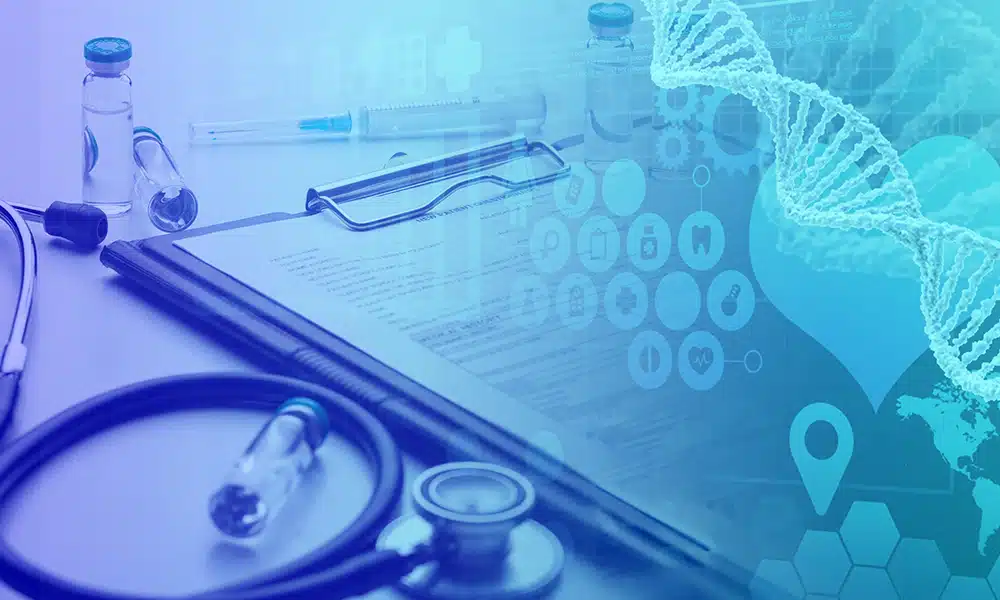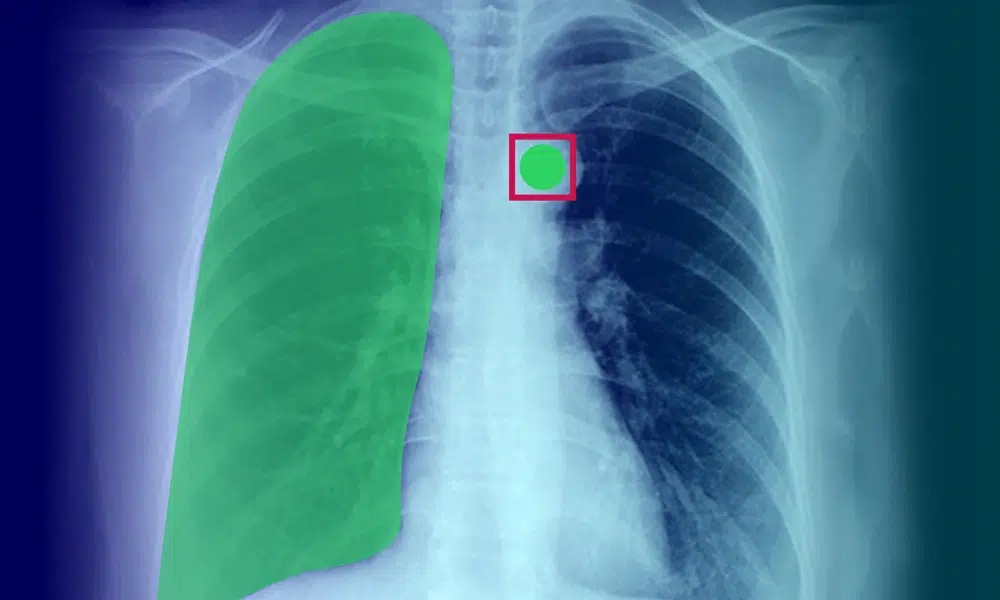Tá athrú paradigm le sárú ag an tionscal cúram sláinte ina sreafaí oibre nuair a cuireadh tús le teicneolaíochtaí nua agus ardteicneolaíochtaí in AI. Trí uirlisí agus teicneolaíochtaí AI a ghiaráil, is féidir torthaí leighis feabhsaithe a fháil le héifeachtúlacht cúram sláinte níos airde.
Is teicneolaíocht riachtanach cúram sláinte é OCR, nó Aitheantas Optúil Carachtair, atá ag éirí thar a bheith coitianta inniu. Cuidíonn teicneolaíocht OCR le sonraí leighis othar agus ospidéal a bhainistiú agus tá sé mar aidhm aici próisis leighis a shruthlíniú le haghaidh torthaí níos fearr.
Lig dúinn foghlaim faoi OCR go domhain agus tuiscint a fháil ar na buntáistí agus na teorainneacha éagsúla a bhaineann leis.
Cad é OCR i gcúram sláinte?
Is teicneolaíocht é Aitheantas Carachtair Optúil a úsáidtear i gcúram sláinte chun sonraí a dhigitiú agus chun cruinneas sonraí a fheabhsú chun éifeachtacht leighis níos airde a fháil. Déanann OCR doiciméid chlóite agus lámhscríofa amhail foirmeacha othar, nótaí dochtúra, lipéid oidis, torthaí saotharlainne, etc., a scanadh agus a thiontú go sonraí digiteacha.
Déanann sé seo stóráil agus bainistiú faisnéise cúram sláinte níos éasca agus cruthaítear bunachair shonraí oiriúnacha do na sonraí atá ann cheana féin. Is fusa teacht ar na sonraí seo atá stóráilte i mbunachair shonraí agus is féidir iad a úsáid chun léargais luachmhara a ghiniúint ó stair leighis othar.
Súil Thapa ar Oibriú OCR
Cé go bhfuil go leor airde á fháil ag OCR le déanaí, níl sé chomh óg agus is cosúil. Forbraíodh OCR i 1974 i SAM chun gach cineál cló a aithint agus a phriontáil go digiteach. Ar ámharaí an tsaoil, anois le teicneolaíochtaí feabhsaithe, tá OCR, freisin, tar éis éirí níos scagtha agus níos éifeachtaí. Seo mar a oibríonn an teicneolaíocht OCR:
- Go príomha, déantar an téacs san íomhá a scanadh, agus déantar carachtair aonair a dheighilt ag baint úsáide as ardchlár.
- Ansin, déantar gach carachtar a mheaitseáil leis na carachtair aitheanta i mbunachar sonraí ar leith. Aithníonn agus stórálann an clár na carachtair aitheanta go léir ón íomhá.
- Ansin cuirtear na carachtair le chéile arís mar a bhí siad san fhormáid as líne.
- Ar deireadh, gintear comhad digiteach nua ina bhfuil an fhaisnéis chéanna agus atá sna doiciméid leighis as líne.
Foghlaim go Mionsonrach faoi Phróiseas OCR! Léigh Anois!
Cad iad na Buntáistí agus Míbhuntáistí a bhaineann le OCR i gCúram Sláinte?
Cosúil le gach teicneolaíocht, tá buntáistí agus teorainneacha ag OCR freisin. Lig dúinn plé a dhéanamh ar an dá cheann acu ionas gur féidir leat anailís chothrom a dhéanamh ar éifeachtacht na teicneolaíochta OCR.
Buntáistí OCR
- Sreafaí Oibre Swift: Mar thoradh ar OCR déantar próisis leighis éagsúla a uathoibriú, lena n-áirítear rochtain a fháil ar fhaisnéis ó EHR, sonraí cúram sláinte a stóráil agus a bhainistiú, anailísíocht chúram sláinte, etc. Feabhsaíonn an uathoibriú seo sna próisis chúram sláinte an t-am próiseála go suntasach agus cabhraíonn sé am a shábháil d'othair agus do lianna.
- Infhaighteacht Níos Airde Sonraí: Is é an buntáiste is fearr de theicneolaíocht OCR ná go gcuireann sé sonraí 24 * 7 ar fáil do na húsáideoirí. De réir mar a stóráiltear na sonraí go digiteach, éiríonn an próiseas eastósctha sonraí simplí, agus is féidir le hothair deireadh a chur le moill ar a gcóireáil.
- Infheistíocht Níos Lú sa Daonchumhachta: Tá an tionscal cúram sláinte comhdhéanta de thascanna athchleachtacha agus tedious éagsúla a éilíonn lucht saothair substaintiúil. Mar sin féin, le OCR, déantar próisis a uathoibriú, agus laghdaítear go mór an gá atá le fórsa saothair cúram sláinte.
- Íoslaghdú Earráidí: Bíonn seans ag daoine earráidí a dhéanamh, go háirithe le linn próisis chúram sláinte casta agus éilitheacha. Ar ámharaí an tsaoil, le OCR, tá idirghabháil dhaonna teoranta, agus is féidir botúin a íoslaghdú.
Míbhuntáistí OCR
- Tá Cumais Stórála Suntasacha ag teastáil ó OCR: Is é bunchloch na teicneolaíochta OCR ná na sonraí leighis go léir d’othair agus do dhochtúirí a dhigitiú le haghaidh torthaí feabhsaithe. Mar sin féin, d’fhéadfadh go mbeadh cumais ollmhóra stórála ag teastáil chun líon mór sonraí a stóráil agus a rochtain.
- Leochaileacht i leith sáruithe sonraí: Is ábhar mór imní d’institiúidí cúram sláinte í an tslándáil sonraí, agus níl teicneolaíocht OCR chomh optamaithe go fóill chun slándáil imleor a sholáthar dá úsáideoirí agus tá sí i mbaol sáruithe sonraí.
- Deacracht maidir le Cruinneas a Fháil: Is í an chuid is deacra de OCR téarmaí casta leighis agus béarlagair a thuiscint go cruinn. D’fhéadfadh earráidí trascríobh nó míchruinneas tuairiscithe teacht as sainaithint mhícheart nó mhíchuí ar charachtair.
- Níos Seans maith d’Earráidí: Níl a lánacmhainneacht bainte amach ag an teicneolaíocht OCR agus tá seans fós ann go ndéanfar earráidí in aithint lámhscríbhneoireacht doiciméad agus íomhánna.
Cásanna Úsáide OCR i gCúram Sláinte a Iniúchadh
Seo roinnt cásanna úsáide féideartha le haghaidh Teicneolaíocht OCR Cúram Sláinte:
Eolas Leighis a Scanadh agus a Stóráil
Is cinnte gurb é seo an cás úsáide is tábhachtaí de OCR. Tá go leor sonraí neamheagraithe ag eagraíochtaí cúram sláinte ar féidir iad a stóráil, a bhainistiú agus a rochtain go héifeachtach trí úsáid a bhaint as OCR.
Bainistíocht Sonrasc
Cumasaíonn OCR sonraisc a scanadh agus a dhigitiú láithreach le cruinneas ard, rud a chabhraíonn go mór le sonraisc othar a stóráil, a roinnt agus a chur in eagar. Cuidíonn OCR le háiseanna cúram sláinte córas bainistíochta sonrasc simplithe a bhaint amach.
Próisis Riaracháin Mhíochaine a Shimpliú
Éascaíonn institiúid feidhmiúil cúram sláinte próisis riaracháin iolracha ag an am céanna. Agus OCR á ghiaráil, is féidir codanna móra de na próisis leighis seo a shruthlíniú, agus is féidir na hualaí ar fhoirne riaracháin a ísliú.
Baint Sonraí as Sean Doiciméid
Tá méid suntasach sonraí leighis is féidir a úsáid chun léargais luachmhara a fháil ar ghalair éagsúla neamheagraithe agus neamhúsáidte i go leor áiseanna cúram sláinte. Is féidir na sonraí seo a bhaint agus a ghiaráil le OCR chun léargais níos fearr a sholáthar ar tinnis éagsúla othar.
Cosaint Sonraí Criticiúla Leighis
Déileálann cúram sláinte le faisnéis íogair othar, ó dhéimeagrafaic go airgeadas. Tá an fhaisnéis ríthábhachtach seo neamhshábháilte agus é i bhfoirm pháipéir. Mar sin, is féidir na sonraí a dhigitiú le OCR, rud a chinntíonn slándáil níos airde.
Réidh le Do Réiteach Cúraim Sláinte OCR Bunaithe ar AI?
Tá OCR i gcúram sláinte ag dul chun cinn níos mó agus tá cruinneas feabhsaithe agus costais ag laghdú. Osclaíonn sé deiseanna nua d’eagraíochtaí cúram sláinte próisis páipéarachais a shruthlíniú, iontráil sonraí a uathoibriú, agus cruinneas cúram othar a fheabhsú. Ina theannta sin, tá roinnt buntáistí riaracháin eile ag baint le teicneolaíocht OCR a ghlacadh. Déanann ár bhforbróirí Shaip speisialtóireacht i réitigh OCR atá slán agus iontaofa a fhorbairt do riachtanais chasta leighis. Is féidir leat dul i dteagmháil lenár saineolaithe chun do thionscadail a phlé.




